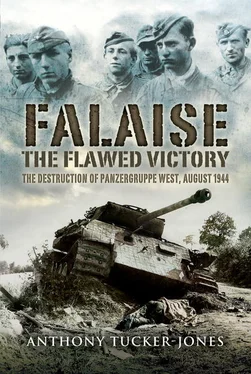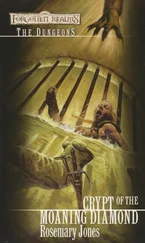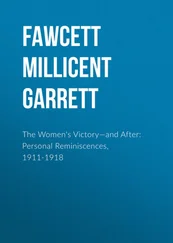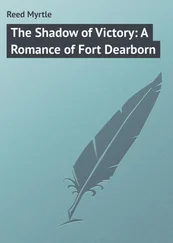Anthony Tucker-Jones
FALAISE
THE FLAWED VICTORY
The Destruction of Panzergruppe West
August 1944
Preface and acknowledgements
In the hot, dusty summer of 1944 Hitler’s panzers fought desperately, first to throw the Allies back into the sea and then to extricate themselves from encirclement in the Normandy countryside. For two and a half bloody months the Germans held the Allies at bay following Operation Overlord and the D-Day landings, but when they were finally trapped in the Falaise pocket it became a corridor of death.
General Dwight Eisenhower, Allied Supreme Commander, conjuring an image of Dante’s Inferno , remarked:
The battlefield of Falaise was unquestionably one of the greatest ‘killing grounds’ of any of the war areas. Roads, highways and fields were so choked with destroyed equipment and dead men and animals that passage through the area was extremely difficult. Forty-eight hours after the closing of the gap I was conducted through it on foot, to encounter scenes that could be described only by Dante. It was literally possible to walk for hundreds of yards at a time, stepping on nothing but dead and decaying flesh.
The final defeat of the German Army in the Falaise pocket on 20 August 1944 is rightly seen as the culmination of the hard-fought Normandy campaign. The destruction of the Wehrmacht, especially the vital panzer divisions in the West, seemed assured. Some likened it to Hitler’s crushing defeats at Stalingrad and in Tunisia.
Eisenhower’s view of Falaise though was tainted with an air of regret:
In the wider sweep directed against the crossings of the Seine behind the German Army, the rapidly advancing Americans were also forced to halt to avoid overrunning their objectives and firing into friendly troops. The Germans again seized the opportunity to escape with a greater portion of his strength than would have been the case if the exact situation could have been completely foreseen.
Respected American military historian Steven Zaloga is on record as saying: ‘Controversy over the Falaise Gap has been a staple of popular histories of the war, many of the accounts being sensationalist clap-trap’. That the Battle for Normandy did not go exactly to plan and that the pinching off of the Falaise pocket was not achieved with the finesse that the Allies may have liked should not detract from the fact that the desired result was achieved.
That the victory was subsequently seen as flawed is not so much a result of the numbers of Germans escaping the trap, after all they left all their heavy equipment behind, but due to their quite remarkable recovery abilities. The escape of small, experienced cadres from each of the panzer divisions seemed to matter little at the time, especially with the Germans retreating pell-mell back across the River Seine. What equipment they did salvage from the chaos of the Normandy countryside lay discarded on the dockside at Rouen and elsewhere.
Nonetheless, it was not long before the shortcomings of Falaise and the failure to conduct a wider encirclement of the Germans up against the Seine became apparent. The reconstituted panzer divisions were soon to cause havoc in Alsace, the Ardennes, the Eifel, the Low Countries, the Hurtgen Forest, the Saar, the Rhineland and the Rhur; more specifically at Aachen, Arnhem, Arnswalde, Balaton, Bastogne, Celles, Cologne, Geilenkirchen, Hunxe, Metz, Nijmegen, Oosterbeek, Remagen, Rimlingen and St Vith. Essentially they were involved everywhere that the Germans sought to impede the Allies slow but steady advance across Western Europe toward Hitler’s crumbling Reich.
In particular the escape of II SS Panzer Corps was to have dire consequences. Just three weeks after the liquidation of the Falaise pocket on 17 September 1944 Montgomery launched Operation Market Garden, intended to take the Allies over the Rhine and into the Nazi industrial heartland of the Ruhr. Tragically, this operation was to be thwarted in spectacular fashion, especially as the British airborne spearhead landed amidst the recuperating 9th SS and 10th SS Panzer Divisions at Arnhem. Although the SS were extremely under strength, when the Allied ground forces were unable to reach the paras the outcome was inevitable.
Yet worse was to come. All those panzer divisions destroyed in the Falaise pocket were rebuilt and, remarkably, just four months later took part in Hitler’s audacious Ardennes counteroffensive. This was launched on 16 December 1944, spearheaded by the 1st SS and 12th SS Panzer Divisions, both veterans of Normandy. Although the offensive was stopped in its tracks, it showed how the defeat at Falaise had singularly failed to completely crush the panzers on the Western Front.
Just two months before the end of the war, the severely-mauled panzer units of the 6th SS Panzer Army then took part in Hitler’s final massive counter-offensive on the Eastern Front. Although the Soviets’ Operation Bagration, timed to coincide with D-Day, had torn the heart out of the panzers on the Eastern Front, following the Ardennes offensive 6th SS Panzer Army was still able to move east to take part in this major counteroffensive in Hungary. The few panzer units left in the West even launched a small counterattack eastwards from the Ruhr pocket in March 1945, in a desperate attempt to escape the encircling Allies.
What shines out, irrespective of the rights or wrongs of Nazi Germany, is the sheer professionalism exhibited by the Wehrmacht and Waffen-SS even when continued resistance seemed a futile exercise. The genesis of this book occurred in 1984 following writing an article to mark the 40th anniversary of D-Day and interviewing one of the directors of the then brand new Portsmouth D-Day Museum.
Of the plethora of books that were published that year, one in particular, Max Hastings’ Overlord: D-Day and the Battle for Normandy , caused a storm of controversy for lauding the Germans’ feat of arms. ‘The glory of German arms in Normandy – and it was glory,’ he wrote, ‘in however evil a cause – was won by the officers and men at divisional level and below who held the line against the Allies under intolerable conditions for more than two months’. Over twenty years on Hastings’ reputation as a military historian remains untarnished and he remains unrepentant: ‘In Overlord , I argued that Hitler’s army was the outstanding fighting force of the Second World War…Since I wrote Overlord , however, my own thinking has changed – not about the battlefield performance of the combatants, but about its significance. Moral and social issues are at stake, more important than any narrow military judgement’. Indeed German military professionalism is one thing, but the Nazi regime passed beyond the pale.
I remember walking Gold and Omaha beaches thinking how had the Allies gained and then enlarged such a precarious toehold. The American cemetery behind Omaha provides stark testimony to the bloody battle for Normandy. Driving west through Arromanches, Bayeux and Carentan then north up the Cotentin Peninsula, I wondered why the Germans had allowed their forces to become trapped in Cherbourg and then outflanked at St Lô despite clinging on so resolutely in the Caen area. How had they got it so wrong in Normandy but bounced back, dragging the war on for another eight months.
Much heated debate has raged about the effectiveness and employment of the panzer divisions in Normandy, though it was the numerically superior German infantry divisions that bore the brunt of the fighting. The failure of the panzers to launch a decisive counterstroke has been blamed on a muddled chain of command, inertia, Hitler’s intransigence and the Allies superiority on the ground and in the air.
Читать дальше












